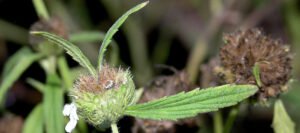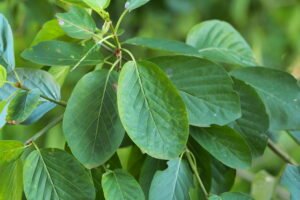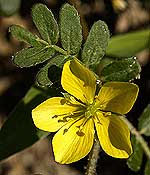
ScientificName: Mitragyna hirsuta
Common Name: Kratum Kok
Family: RUBIACEAE
Parts Use: Leaf and Twig
Of course, here’s an article about Mitragyna hirsuta (Kra Thum Khok), written for a natural products website. This article focuses on its botanical characteristics, traditional uses, and the compounds found within it, while being very cautious about its potential effects and regulatory status, especially given its relation to Mitragyna speciosa (Kratom).
Exploring Mitragyna hirsuta: A Traditional Botanical of Southeast Asia
In the rich botanical landscape of Southeast Asia, Mitragyna hirsuta stands as a lesser-known but significant member of the Mitragyna genus. Often referred to as “Kra Thum Khok” (กระทุ่มโคก) in Thailand, this tree shares some botanical similarities with its more famous relative, Mitragyna speciosa (Kratom), yet possesses its own unique profile and traditional applications within local communities.
A Native of the Region
Mitragyna hirsuta is a medium-sized tree found primarily in the rainforests and wetlands of countries like Thailand, Cambodia, Laos, and Vietnam. It belongs to the Rubiaceae family, which also includes coffee. The tree is characterized by its broad, ovate leaves and distinctive spherical flower heads. Traditionally, it’s the leaves of Mitragyna hirsuta that have been harvested and used.
Traditional Uses and Folk Wisdom
For generations, communities in its native regions have integrated Mitragyna hirsuta into their traditional wellness practices. These uses are rooted in local knowledge passed down through time:
- Traditional Energy and Stamina Support: In some rural areas, traditional users have consumed Mitragyna hirsuta leaves, often by chewing them or brewing them into a tea, with the aim of boosting energy levels and enhancing physical stamina for daily tasks.
- General Well-being: It has also been used as part of traditional tonics intended to promote a general sense of well-being and to alleviate minor discomforts.
- Work Aid: Similar to some traditional uses of Kratom, Mitragyna hirsuta has sometimes been employed by laborers to help manage long hours of work and reduce fatigue.
It is important to emphasize that these are traditional, anecdotal uses and not claims of medical efficacy.
The Science Behind the Leaves: Key Alkaloids
Modern scientific research is beginning to explore the chemical composition of Mitragyna hirsuta. Like other plants in the Mitragyna genus, it contains a variety of alkaloids. The primary active alkaloid identified in Mitragyna hirsuta is Mitraphylline. While related to the alkaloids found in Mitragyna speciosa (like Mitragynine and 7-hydroxymitragynine), Mitraphylline has a different chemical structure and is believed to have a distinct profile of potential effects.
Research into Mitraphylline is ongoing, and its specific biological activities are still being fully elucidated. It is often studied for its potential properties, which may include effects on the body’s natural systems, though its precise actions are less potent and different from those of Mitragynine found in Kratom.








Reviews
There are no reviews yet.